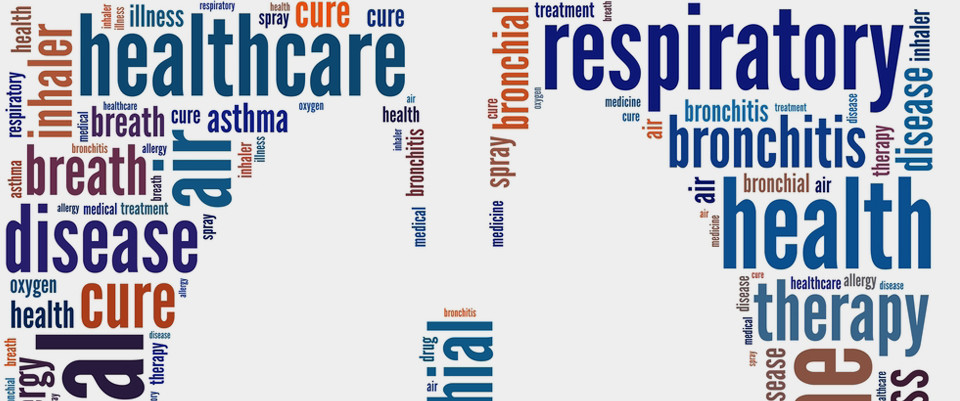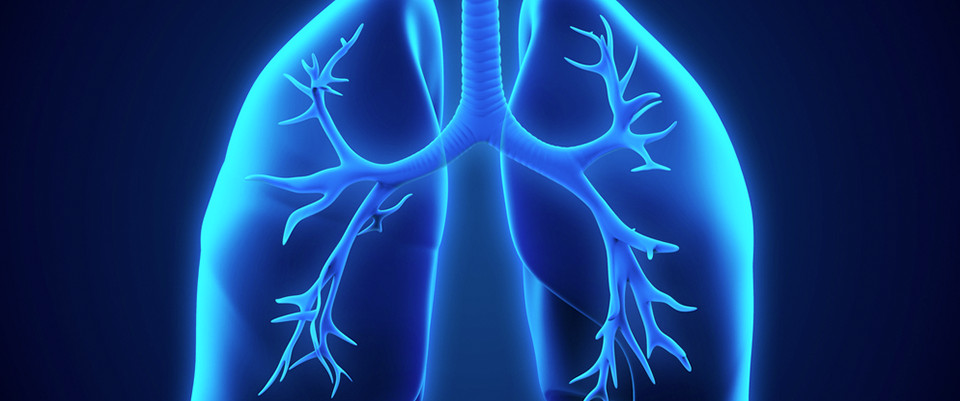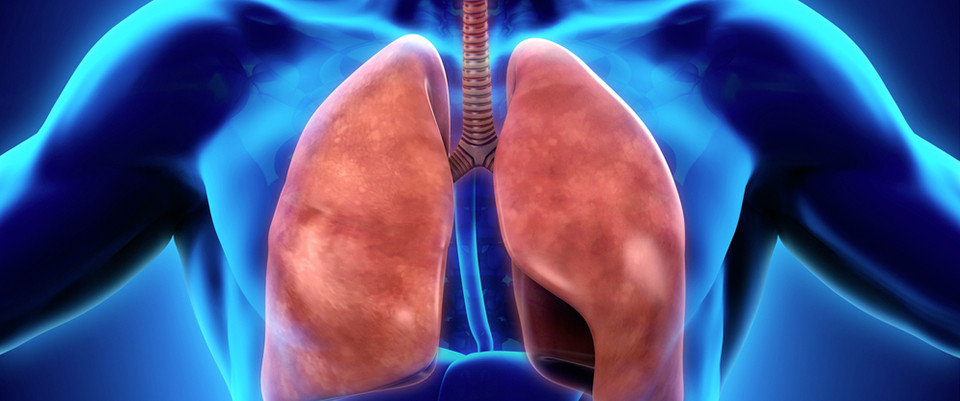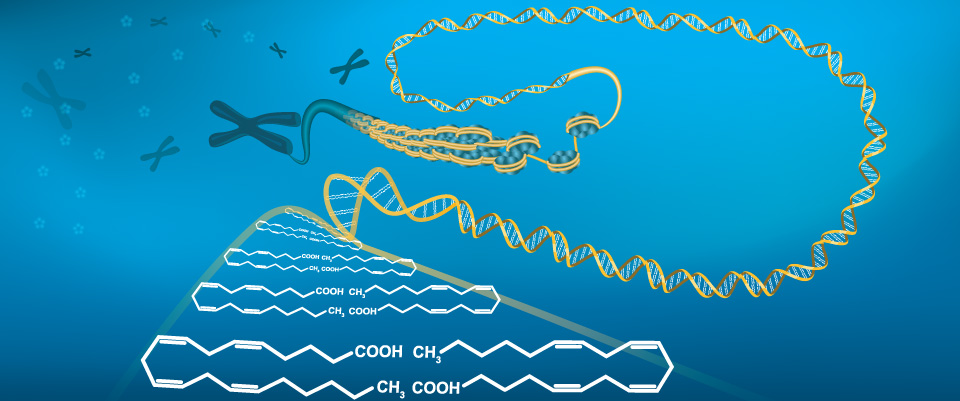PubMed
Efficient Mitochondrial Glutamine Targeting Prevails Over Glioblastoma Metabolic Plasticity.
Related Articles
Efficient Mitochondrial Glutamine Targeting Prevails Over Glioblastoma Metabolic Plasticity.
Clin Cancer Res. 2017 Oct 15;23(20):6292-6304
Authors: Oizel K, Chauvin C, Oliver L, Gratas C, Geraldo F, Jarry U, Scotet E, Rabe M, Alves-Guerra MC, Teusan R, Gautier F, Loussouarn D, Compan V, Martinou JC, Vallette FM, Pecqueur C
Abstract
Purpose: Glioblastoma (GBM) is the most common and malignant form of primary human brain tumor in adults, with an average survival at diagnosis of 18 months. Metabolism is a new attractive therapeutic target in cancer; however, little is known about metabolic heterogeneity and plasticity within GBM tumors. We therefore aimed to investigate metabolic phenotyping of primary cultures in the context of molecular tumor heterogeneity to provide a proof of concept for personalized metabolic targeting of GBM.Experimental Design: We have analyzed extensively several primary GBM cultures using transcriptomics, metabolic phenotyping assays, and mitochondrial respirometry.Results: We found that metabolic phenotyping clearly identifies 2 clusters, GLNHigh and GLNLow, mainly based on metabolic plasticity and glutamine (GLN) utilization. Inhibition of glutamine metabolism slows the in vitro and in vivo growth of GLNHigh GBM cultures despite metabolic adaptation to nutrient availability, in particular by increasing pyruvate shuttling into mitochondria. Furthermore, phenotypic and molecular analyses show that highly proliferative GLNHigh cultures are CD133neg and display a mesenchymal signature in contrast to CD133pos GLNLow GBM cells.Conclusions: Our results show that metabolic phenotyping identified an essential metabolic pathway in a GBM cell subtype, and provide a proof of concept for theranostic metabolic targeting. Clin Cancer Res; 23(20); 6292-304. ©2017 AACR.
PMID: 28720668 [PubMed - indexed for MEDLINE]
Targeted Exome Sequencing of Krebs Cycle Genes Reveals Candidate Cancer-Predisposing Mutations in Pheochromocytomas and Paragangliomas.
Related Articles
Targeted Exome Sequencing of Krebs Cycle Genes Reveals Candidate Cancer-Predisposing Mutations in Pheochromocytomas and Paragangliomas.
Clin Cancer Res. 2017 Oct 15;23(20):6315-6324
Authors: Remacha L, Comino-Méndez I, Richter S, Contreras L, Currás-Freixes M, Pita G, Letón R, Galarreta A, Torres-Pérez R, Honrado E, Jiménez S, Maestre L, Moran S, Esteller M, Satrústegui J, Eisenhofer G, Robledo M, Cascón A
Abstract
Purpose: Mutations in Krebs cycle genes are frequently found in patients with pheochromocytomas/paragangliomas. Disruption of SDH, FH or MDH2 enzymatic activities lead to accumulation of specific metabolites, which give rise to epigenetic changes in the genome that cause a characteristic hypermethylated phenotype. Tumors showing this phenotype, but no alterations in the known predisposing genes, could harbor mutations in other Krebs cycle genes.Experimental Design: We used downregulation and methylation of RBP1, as a marker of a hypermethylation phenotype, to select eleven pheochromocytomas and paragangliomas for targeted exome sequencing of a panel of Krebs cycle-related genes. Methylation profiling, metabolite assessment and additional analyses were also performed in selected cases.Results: One of the 11 tumors was found to carry a known cancer-predisposing somatic mutation in IDH1 A variant in GOT2, c.357A>T, found in a patient with multiple tumors, was associated with higher tumor mRNA and protein expression levels, increased GOT2 enzymatic activity in lymphoblastic cells, and altered metabolite ratios both in tumors and in GOT2 knockdown HeLa cells transfected with the variant. Array methylation-based analysis uncovered a somatic epigenetic mutation in SDHC in a patient with multiple pheochromocytomas and a gastrointestinal stromal tumor. Finally, a truncating germline IDH3B mutation was found in a patient with a single paraganglioma showing an altered α-ketoglutarate/isocitrate ratio.Conclusions: This study further attests to the relevance of the Krebs cycle in the development of PCC and PGL, and points to a potential role of other metabolic enzymes involved in metabolite exchange between mitochondria and cytosol. Clin Cancer Res; 23(20); 6315-24. ©2017 AACR.
PMID: 28720665 [PubMed - indexed for MEDLINE]
A joint analysis of transcriptomic and metabolomic data uncovers enhanced enzyme-metabolite coupling in breast cancer.
Related Articles
A joint analysis of transcriptomic and metabolomic data uncovers enhanced enzyme-metabolite coupling in breast cancer.
Sci Rep. 2016 07 13;6:29662
Authors: Auslander N, Yizhak K, Weinstock A, Budhu A, Tang W, Wang XW, Ambs S, Ruppin E
Abstract
Disrupted regulation of cellular processes is considered one of the hallmarks of cancer. We analyze metabolomic and transcriptomic profiles jointly collected from breast cancer and hepatocellular carcinoma patients to explore the associations between the expression of metabolic enzymes and the levels of the metabolites participating in the reactions they catalyze. Surprisingly, both breast cancer and hepatocellular tumors exhibit an increase in their gene-metabolites associations compared to noncancerous adjacent tissues. Following, we build predictors of metabolite levels from the expression of the enzyme genes catalyzing them. Applying these predictors to a large cohort of breast cancer samples we find that depleted levels of key cancer-related metabolites including glucose, glycine, serine and acetate are significantly associated with improved patient survival. Thus, we show that the levels of a wide range of metabolites in breast cancer can be successfully predicted from the transcriptome, going beyond the limited set of those measured.
PMID: 27406679 [PubMed - indexed for MEDLINE]
metabolomics; +34 new citations
34 new pubmed citations were retrieved for your search.
Click on the search hyperlink below to display the complete search results:
metabolomics
These pubmed results were generated on 2018/05/23PubMed comprises more than millions of citations for biomedical literature from MEDLINE, life science journals, and online books.
Citations may include links to full-text content from PubMed Central and publisher web sites.
metabolomics; +34 new citations
34 new pubmed citations were retrieved for your search.
Click on the search hyperlink below to display the complete search results:
metabolomics
These pubmed results were generated on 2018/05/23PubMed comprises more than millions of citations for biomedical literature from MEDLINE, life science journals, and online books.
Citations may include links to full-text content from PubMed Central and publisher web sites.
metabolomics; +16 new citations
16 new pubmed citations were retrieved for your search.
Click on the search hyperlink below to display the complete search results:
metabolomics
These pubmed results were generated on 2018/05/22PubMed comprises more than millions of citations for biomedical literature from MEDLINE, life science journals, and online books.
Citations may include links to full-text content from PubMed Central and publisher web sites.
metabolomics; +16 new citations
16 new pubmed citations were retrieved for your search.
Click on the search hyperlink below to display the complete search results:
metabolomics
These pubmed results were generated on 2018/05/22PubMed comprises more than millions of citations for biomedical literature from MEDLINE, life science journals, and online books.
Citations may include links to full-text content from PubMed Central and publisher web sites.
Oral ibuprofen differentially affects plasma and sweat lipid mediator profiles in healthy adult males.
Related Articles
Oral ibuprofen differentially affects plasma and sweat lipid mediator profiles in healthy adult males.
Prostaglandins Other Lipid Mediat. 2018 May 17;:
Authors: Agrawal K, Bosviel R, Piccolo BD, Newman JW
Abstract
Sweat contains a variety of lipid mediators, but whether they originate from the plasma filtrate or from the cutaneous sweat glandular tissues themselves is unknown. To explore this knowledge gap, we collected plasma and sweat from healthy men (n = 9) immediately before and 0.5, 2 and 4 h after oral administration of 400 mg ibuprofen. Of the over 100 lipid mediators assayed by liquid chromatography-tandem mass spectrometry, ~45 were detected in both plasma and sweat, and 36 were common to both matrices. However, baseline concentrations in each matrix were not correlated and metabolite relative abundances between matrices differed. Oral ibuprofen administration altered sweat lipid mediators, reducing prostaglandin E2, linoleoylethanolamide, and oleoylethanolamide, while increasing 11-hydroxyeicosatetraenoic acid, and causing transient changes in 9-nitrooleate, N-arachidonylglycine and 20-hydroxyeicosatetraenoic acid. Meanwhile, plasma N-acylethanolamide concentrations increased with ibuprofen administration. These results suggest that sweat and plasma differentially reflect biochemical changes due to oral ibuprofen administration, and that plasma is unlikely to be the predominant source of the sweat lipid mediator profile.
PMID: 29778785 [PubMed - as supplied by publisher]
Plasma metabolic changes in Chinese HIV-infected patients receiving lopinavir/ritonavir based treatment: Implications for HIV precision therapy.
Related Articles
Plasma metabolic changes in Chinese HIV-infected patients receiving lopinavir/ritonavir based treatment: Implications for HIV precision therapy.
Cytokine. 2018 May 16;110:204-212
Authors: Li X, Wu T, Jiang Y, Zhang Z, Han X, Geng W, Ding H, Kang J, Wang Q, Shang H
Abstract
OBJECTIVES: The goal of this study is to profile the metabolic changes in the plasma of HIV patients receiving lopinavir/ritonavir (LPV/r)-based highly active antiretroviral therapy (HAART) relative to their treatment-naïve phase, aimed to identify precision therapy for HIV for improving prognosis and predicting dyslipidemia caused by LPV/r.
METHODS: 38 longitudinal plasma samples were collected from 19 HIV-infected patients both before and after antiretroviral therapy, and 18 samples from healthy individuals were used as controls. Untargeted metabolomics profiling of these plasma samples was performed using liquid chromatography-mass spectrometry (LC-MS) and gas chromatography-mass spectrometry (GC-MS).
RESULTS: A total of 331 compounds of known identity were detected among these metabolites, a 67-metabolite signature mainly mapping to tryptophan, histidine, acyl carnitine, ketone bodies and fatty acid metabolism distinguished HIV patients from healthy controls. The levels of 19 out of the 67 altered metabolites including histidine, kynurenine, and 3-hydroxybutyrate (BHBA), recovered after LPV/r-based antiretroviral therapy, and histidine was positively correlated with the presence of CD4 + T lymphocytes. Furthermore, using receiver operating characteristic (ROC) analyses, we discovered that butyrylcarnitine in combination with myristic acid from plasma in treatment-naïve patients could predict dyslipidemia caused by LPV/r with 87% accuracy.
CONCLUSIONS: Metabolites alterations in treatment-naïve HIV patients may indicate an inflammatory, oxidative state and mitochondrial dysfunction that is permissive for disease progression. Histidine may provide a specific protective function for HIV patients. Besides, elevated fatty acids levels including butyrylcarnitine and myristic acid after infection may indicate patients at risk of suffering from dyslipidemia after LPV/r-based HAART.
PMID: 29778008 [PubMed - as supplied by publisher]
Integrated proteomics, genomics, metabolomics approaches reveal oxalic acid as pathogenicity factor in Tilletia indica inciting Karnal bunt disease of wheat.
Related Articles
Integrated proteomics, genomics, metabolomics approaches reveal oxalic acid as pathogenicity factor in Tilletia indica inciting Karnal bunt disease of wheat.
Sci Rep. 2018 May 18;8(1):7826
Authors: Pandey V, Singh M, Pandey D, Kumar A
Abstract
Tilletia indica incites Karnal bunt (KB) disease in wheat. To date, no KB resistant wheat cultivar could be developed due to non-availability of potential biomarkers related to pathogenicity/virulence for screening of resistant wheat genotypes. The present study was carried out to compare the proteomes of T. indica highly (TiK) and low (TiP) virulent isolates. Twenty one protein spots consistently observed as up-regulated/differential in the TiK proteome were selected for identification by MALDI-TOF/TOF. Identified sequences showed homology with fungal proteins playing essential role in plant infection and pathogen survival, including stress response, adhesion, fungal penetration, invasion, colonization, degradation of host cell wall, signal transduction pathway. These results were integrated with T. indica genome sequence for identification of homologs of candidate pathogenicity/virulence related proteins. Protein identified in TiK isolate as malate dehydrogenase that converts malate to oxaloacetate which is precursor of oxalic acid. Oxalic acid is key pathogenicity factor in phytopathogenic fungi. These results were validated by GC-MS based metabolic profiling of T. indica isolates indicating that oxalic acid was exclusively identified in TiK isolate. Thus, integrated omics approaches leads to identification of pathogenicity/virulence factor(s) that would provide insights into pathogenic mechanisms of fungi and aid in devising effective disease management strategies.
PMID: 29777151 [PubMed - in process]
Comparison of the serum metabolic signatures based on 1H NMR between patients and a rat model of deep vein thrombosis.
Related Articles
Comparison of the serum metabolic signatures based on 1H NMR between patients and a rat model of deep vein thrombosis.
Sci Rep. 2018 May 18;8(1):7837
Authors: Cao J, Jin QQ, Wang GM, Dong HL, Feng YM, Tian JS, Yun KM, Wang YY, Sun JH
Abstract
Deep vein thrombosis (DVT) and pulmonary embolism (PE) have high morbidity, reduce quality of life, and can cause death. Biomarkers or genetic risk factors have not been identified in patients with DVT. In present study, serum of 61 patients suffering from DVT and a rat DVT model (n = 10) were assayed by a proton nuclear magnetic resonance (1H NMR) metabolomics technique combing with multivariate statistical analysis to identify the metabolites. The MetPA platform was used to identify differences in the metabolic pathways between the rat model and patients. The metabolomics results discovered that 11 different metabolites in rats and 20 different metabolites in DVT patients. Seven metabolites both altered in the rats and patients. Moreover, we observed changes in the metabolic pathways, including carbohydrate metabolism, lipid metabolism, and amino acid metabolism that were induced immediately by the thrombosis. Pathway of aminoacyl-tRNA biosynthesis perturbed only in the patients which was associated with the genetic risk factor of DVT. The study demonstrated that serum 1H NMR metabolomics can be used to diagnose DVT in the clinic. The altered pathways related to thrombosis and genetics will provide a foundation and new strategies for understanding the pathological mechanism and pharmacological targets of DVT.
PMID: 29777128 [PubMed - in process]
Comparative study on metabolite level in tissue-specific human mesenchymal stem cells by an ultra-performance liquid chromatography quadrupole time of flight mass spectrometry.
Related Articles
Comparative study on metabolite level in tissue-specific human mesenchymal stem cells by an ultra-performance liquid chromatography quadrupole time of flight mass spectrometry.
Anal Chim Acta. 2018 Sep 18;1024:112-122
Authors: Lee SJ, Yi T, Ahn SH, Lim DK, Kim SN, Lee HJ, Cho YK, Lim JY, Sung JH, Yun JH, Lim J, Song SU, Kwon SW
Abstract
Mesenchymal stem cells (MSCs) are a promising therapeutic option for cell-based therapy due to their immunomodulatory and regenerative properties. They can be isolated from various adult tissues, including bone marrow, fat, dental tissue, and glandular tissue. Although they share common characteristics, little is known about the biological differences between MSC populations derived from different tissues. In this study, we used MS to compare the endogenous metabolite level in the human MSCs originating from the bone marrow, adipose tissue, periodontal ligaments, and salivary glands. Using an optimized metabolomics technique, we verified that human MSCs exhibit differences in the endogenous metabolite level depending on their source material, while the multivariate analysis showed that 5 lysophosphatidylcholines and 3 lysophosphatidylethanolamines can serve as markers for the discrimination between MSC sources and may be related to differences in their differentiation capacity. These results may significantly contribute to further mechanistic studies on the MSCs and provide novel insights into the properties and optimal usage of MSCs from different tissues.
PMID: 29776537 [PubMed - in process]
Toxicological effects on earthworms (Eisenia fetida) exposed to sub-lethal concentrations of BDE-47 and BDE-209 from a metabolic point.
Toxicological effects on earthworms (Eisenia fetida) exposed to sub-lethal concentrations of BDE-47 and BDE-209 from a metabolic point.
Environ Pollut. 2018 May 15;240:653-660
Authors: Liang R, Chen J, Shi Y, Lu Y, Sarvajayakesavalu S, Xu X, Zheng X, Khan K, Su C
Abstract
Earthworms improve the soil fertility and they are also sensitive to soil contaminants. Earthworms (Eisenia fetida), standard reference species, were usually chosen to culture and handle for toxicity tests. Metabolic responses in earthworms exposed to 2, 2', 4, 4'-tetrabromodiphenyl ether (BDE-47) and decabromodiphenyl ether (BDE-209) were inhibitory and interfered with basal metabolism. In this study, 1H-NMR based metabolomics was used to identify sensitive biomarkers and explore metabolic responses of earthworms under sub-lethal BDE-47 and BDE-209 concentrations for 14 days. The results revealed that lactate was accumulated in earthworms exposed to BDE-47 and BDE-209. Glutamate increased significantly when the concentration of BDE-47 and BDE-209 reached 10 mg/kg. The BDE-47 exposure above 50 mg/kg concentration decreased the content of fumarate significantly, which was noticed different from that of BDE-209. Whereas, the BDE-207 or BDE-209 exposure increased the protein degradation into amino acids in vivo. The increased betaine content indicated that earthworms may maintain the cell osmotic pressure and protected enzyme activity by metabolic regulation. Moreover, the BDE-47 and BDE-209 exposure at 10 mg/kg changed most of the metabolites significantly, indicating that the metabolic responses were more sensitive than growth inhibition and gene expression. The metabolomics results revealed the toxic modes of BDE-47 and BDE-209 act on the osmoregulation, energy metabolism, nerve activities, tricarboxylic acid cycle and amino acids metabolism. Furthermore, our results highlighted that the 1H-NMR based metabolomics is a strong tool for identifying sensitive biomarkers and eco-toxicological assessment.
PMID: 29775942 [PubMed - as supplied by publisher]
Metabolomics in breast cancer: A decade in review.
Metabolomics in breast cancer: A decade in review.
Cancer Treat Rev. 2018 May 03;67:88-96
Authors: McCartney A, Vignoli A, Biganzoli L, Love R, Tenori L, Luchinat C, Di Leo A
Abstract
Breast cancer (BC) is a heterogeneous disease which has been characterised and stratified by many platforms such as clinicopathological risk factors, genomic assays, computer generated models, and various "-omic" technologies. Genomic, proteomic and transcriptomic analysis in breast cancer research is well established, and metabolomics, which can be considered a downstream manifestation of the former disciplines, is of growing interest. The past decade has seen significant progress made within the field of clinical metabolomic BC research, with several groups demonstrating results with significant promise in the setting of BC screening and biological characterisation, as well as future potential for prognostic metabolomic biomarkers.
PMID: 29775779 [PubMed - as supplied by publisher]
Defining the Osteoarthritis Patient: Back to the Future.
Defining the Osteoarthritis Patient: Back to the Future.
Osteoarthritis Cartilage. 2018 May 15;:
Authors: Dobson GP, Letson HL, Grant A, McEwen P, Hazratwala K, Wilkinson M, Morris JL
Abstract
The history of osteoarthritis (OA) is important because it can help broaden our perspective on past and present controversies. The naming of OA, beginning with Heberden's nodes, is itself a fascinating story. According to Albert Hoffa, R. Llewellyn Jones and Archibald Edward Garrod, the name OA was introduced in the mid-19th century by surgeon Richard von Volkmann who distinguished it from rheumatoid arthritis and gout. Others preferred the terms 'chronical rheumatism', 'senile arthritis', 'hypertrophic arthritis' or 'arthritis deformans'. A similar narrative applies to the concept of OA affecting the whole joint vs. the 'wear-and-tear' hypothesis, inflammation and the role of the central nervous system (CNS). In the late 19th and early 20th centuries, the Garrods (father and son) and Hermann Senator argued that OA was a whole joint disease, and that inflammation played a major role in its progression. Garrod Jnr and John Spender also linked OA to a neurogenic lesion 'outside the joint'. The remaining 20th century was no less dynamic, with major advances in basic science, diagnostics, treatments, surgical interventions and technologies. Today, OA is characterized as a multi-disease with inflammation, immune and CNS dysfunction playing central roles in whole joint damage, injury progression, pain and disability. In the current 'omics' era (genomics, proteomics and metabolomics), we owe a great debt to past physicians and surgeons who dared to think 'outside-the-box' to explain and treat OA. Over 130 years later, despite these developments, we still don't fully understand the unravelling complexities of OA, and we still don't have a cure.
PMID: 29775734 [PubMed - as supplied by publisher]
Metabolomics Analysis of the Toxic Effects of the Production of Lycopene and Its Precursors.
Related Articles
Metabolomics Analysis of the Toxic Effects of the Production of Lycopene and Its Precursors.
Front Microbiol. 2018;9:760
Authors: Miguez AM, McNerney MP, Styczynski MP
Abstract
Using cells as microbial factories enables highly specific production of chemicals with many advantages over chemical syntheses. A number of exciting new applications of this approach are in the area of precision metabolic engineering, which focuses on improving the specificity of target production. In recent work, we have used precision metabolic engineering to design lycopene-producing Escherichia coli for use as a low-cost diagnostic biosensor. To increase precursor availability and thus the rate of lycopene production, we heterologously expressed the mevalonate pathway. We found that simultaneous induction of these pathways increases lycopene production, but induction of the mevalonate pathway before induction of the lycopene pathway decreases both lycopene production and growth rate. Here, we aim to characterize the metabolic changes the cells may be undergoing during expression of either or both of these heterologous pathways. After establishing an improved method for quenching E. coli for metabolomics analysis, we used two-dimensional gas chromatography coupled to mass spectrometry (GCxGC-MS) to characterize the metabolomic profile of our lycopene-producing strains in growth conditions characteristic of our biosensor application. We found that the metabolic impacts of producing low, non-toxic levels of lycopene are of much smaller magnitude than the typical metabolic changes inherent to batch growth. We then used metabolomics to study differences in metabolism caused by the time of mevalonate pathway induction and the presence of the lycopene biosynthesis genes. We found that overnight induction of the mevalonate pathway was toxic to cells, but that the cells could recover if the lycopene pathway was not also heterologously expressed. The two pathways appeared to have an antagonistic metabolic effect that was clearly reflected in the cells' metabolic profiles. The metabolites homocysteine and homoserine exhibited particularly interesting behaviors and may be linked to the growth inhibition seen when the mevalonate pathway is induced overnight, suggesting potential future work that may be useful in engineering increased lycopene biosynthesis.
PMID: 29774011 [PubMed]
Metabolic perturbations of post-load hyperglycemia vs. fasting hyperglycemia.
Related Articles
Metabolic perturbations of post-load hyperglycemia vs. fasting hyperglycemia.
Acta Pharmacol Sin. 2018 May 17;:
Authors: Lu JY, Peng JH, Ma XJ, Zhang YN, Zhu W, He XX, Ying LW, Bao YQ, Zhou J, Jia WP
Abstract
There is evidence that post-load/post-meal hyperglycemia is a stronger risk factor for cardiovascular disease than fasting hyperglycemia. The underlying mechanism remains to be elucidated. The current study aimed to compare the metabolic profiles of post-load hyperglycemia and fasting hyperglycemia. All subjects received an oral glucose tolerance test (OGTT) and were stratified into fasting hyperglycemia (FH) or post-load hyperglycemia (PH). Forty-six (FH, n = 23; PH, n = 23) and 40 patients (FH, n = 20; PH, n = 20) were recruited as the exploratory and the validation set, respectively, and underwent metabolic profiling. Eighty-seven subjects including normal controls (NC: n = 36; FH: n = 22; PH: n = 29) were additionally enrolled and assayed with enzyme-linked immunosorbent assay (ELISA). In the exploratory set, 10 metabolites were selected as differential metabolites of PH (vs. FH). Of them, mannose and 5-aminoimidazole-4-carboxamide ribonucleotide (AICAR) were confirmed in the validation set to be significantly higher in FH than in PH. In the 87 subjects measured with ELISA, FH had numerically higher mannose (466.0 ± 179.3 vs. 390.1 ± 140.2 pg/ml) and AICAR (523.5 ± 164.8 vs. 512.1 ± 186.0 pg/ml) than did PH. In the pooled dataset comprising 173 subjects, mannose was independently associated with FPG (β = 0.151, P = 0.035) and HOMA-IR (β = 0.160, P = 0.026), respectively. The associations of AICAR with biochemical parameters did not reach statistical significance. FH and PH exhibited distinct metabolic profiles. The perturbation of mannose may be involved in the pathophysiologic disturbances in diabetes.
PMID: 29773885 [PubMed - as supplied by publisher]
When fed foods with similar palatability, healthy adult dogs and cats choose different macronutrient compositions.
Related Articles
When fed foods with similar palatability, healthy adult dogs and cats choose different macronutrient compositions.
J Exp Biol. 2018 May 17;:
Authors: Hall JA, Vondran JC, Vanchina MA, Jewell DE
Abstract
Dogs and cats make short-term food choices based on palatability. We hypothesized that if palatability were masked, long-term food choices would be based on physiologic requirements, and circulating metabolite concentrations would reflect those choices. Four experimental foods with similar palatability, but varying in macronutrient composition, were prepared for healthy adult dogs (n=17) and cats (n=27). Food 1 was high protein; Food 2 was high fat; Food 3 was high carbohydrates; and Food 4 was balanced for macronutrients. By choosing any combination of foods, dogs and cats could individually set their macronutrient intake. Plasma metabolomic profiles were determined at baseline and after animals had consumed their food intake of choice for 28 days. Based on food intake calculations over 28 days, dogs on average chose to consume most of their calories from fat (41.1±4.3%) and then carbohydrate (35.8±3.7%), whereas cats on average chose to consume most of their calories from carbohydrate (43.1±4.0%) and then protein (30.3±3.9%; all P<0.001). Age and lean or fat body mass also influenced protein intake. Younger, leaner cats consumed more protein compared with older cats, whereas younger leaner dogs consumed less protein compared with dogs having more fat body mass. Older cats with moderate protein intake had lower circulating docosahexaenoic acid (DHA) concentrations as well as higher concentrations of sulfated microbial catabolic products compared with younger, leaner cats. In summary, when fed foods with similar palatability, dogs and cats consume different macronutrient compositions, and concentrations of circulating metabolites in cats reflect food choices.
PMID: 29773684 [PubMed - as supplied by publisher]
Relations of gut liver axis components and gut microbiota in obese children with fatty liver: A pilot study.
Related Articles
Relations of gut liver axis components and gut microbiota in obese children with fatty liver: A pilot study.
Clin Res Hepatol Gastroenterol. 2018 May 14;:
Authors: Pierri L, Saggese P, Guercio Nuzio S, Troisi J, Di Stasi M, Poeta M, Savastano R, Marchese G, Tarallo R, Massa G, Ciccone V, Ziegenhardt D, Cavallo P, Bergheim I, Weisz A, Vajro P
PMID: 29773420 [PubMed - as supplied by publisher]
Protective effects of ethanolic peel and pulp extracts of Citrus macroptera fruit against isoproterenol-induced myocardial infarction in rats.
Related Articles
Protective effects of ethanolic peel and pulp extracts of Citrus macroptera fruit against isoproterenol-induced myocardial infarction in rats.
Biomed Pharmacother. 2017 Oct;94:256-264
Authors: Paul S, Das S, Tanvir EM, Hossen MS, Saha M, Afroz R, Islam MA, Hossain MS, Gan SH, Ibrahim Khalil M
Abstract
Increases in the incidence of cardiovascular disease (CVD) have aroused strong interest in identifying antioxidants from natural sources for use in preventive medicine. Citrus macroptera (C. macroptera), commonly known as "Satkara", is an important herbal and medicinal plant reputed for its antioxidant, nutritious and therapeutic uses. The aim of the present study was to investigate the cardio-protective effects of ethanol extracts of C. macroptera peel and pulp against isoproterenol (ISO)-induced myocardial infarction (MI) in rats. Male albino Wistar rats (n=36) were pre-treated with peel and pulp extracts (500mg/kg) for 45days. They received a challenge with ISO (85mg/kg) on the 44th and 45th days. Our findings indicated that subcutaneous injection of ISO induced severe myocardial injuries associated with oxidative stress, as confirmed by elevated lipid peroxidation (LPO) and decreased cellular reduced glutathione (GSH) and anti-peroxidative enzymes, including glutathione peroxidase, glutathione reductase and glutathione-S-transferase, compared with levels observed in control animals. Pre-treatment with C. macroptera peel and pulp extracts prior to ISO administration however, significantly improved many of the investigated biochemical parameters, i.e., cardiac troponin I, cardiac marker enzymes, lipid profile and oxidative stress markers. The fruit peel extract showed stronger cardio-protective effects than the pulp extract. The biochemical findings were further confirmed by histopathological examinations. Overall, the increased endogenous antioxidant enzyme activity against heightened oxidative stress in the myocardium is strongly suggestive of the cardio-protective potential of C. macroptera.
PMID: 28763749 [PubMed - indexed for MEDLINE]











